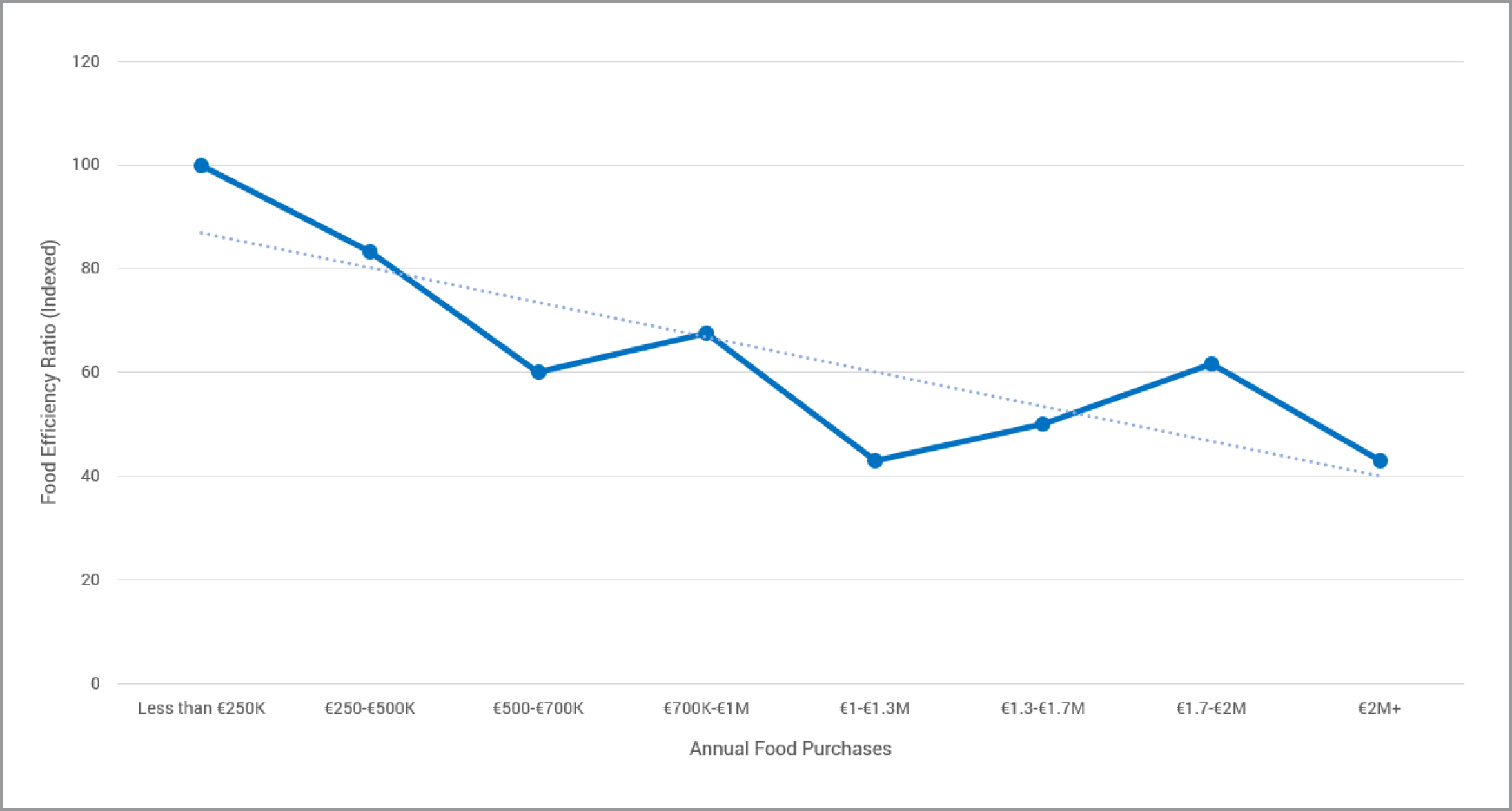Data shows lower food volumes can lead to more food waste

As foodservice operations reopen from COVID-19 shutdowns, it is widely anticipated that service volumes will be reduced at the onset and increase slowly over months. While it may be assumed that less traffic leads to less food waste, a new Leanpath analysis shows just the opposite: on average, low volumes actually lead to higher levels of food waste relative to food purchases.
The analysis of Leanpath data is based on a metric called the Food Efficiency Ratio, or FER, which measures the percentage of food purchases that are wasted. A lower FER means you are wasting less of the food coming in the kitchen’s back door, and are thus more efficient.
Leanpath analyzed pre-consumer food waste and food purchase data for approximately 150 European sites for a full calendar year of operations. We first calculated an annual FER for each site and then grouped each site according to their total annual food purchases.
From left to right in the chart below you see annual food purchases categorized from less than €250K to greater than €2M. The solid blue line represents the average FER at each level. As you see, the analysis shows that as the size of a site’s annual food purchases increases, its percentage of food waste decreases.

(To ensure data remains anonymized, the chart is indexed, with the highest FER level (on the left) set at 100.)
These results show a correlation between food purchase volumes and FER, with smaller volume sites experiencing consistently higher FERs compared to larger sites. This suggests larger sites maintain an efficiency advantage due to their size.
“When it comes to food waste, high production levels create a lot of buffer for kitchens,” explains Leanpath Executive Chef Robb White. “Because there is simply more food being served there are more opportunities, for instance, to repurpose overproduction. Likewise, when you’re moving through product faster, you have less opportunity to create waste through spoilage or expiration. The best way for smaller-volume operations to lower their FER is to have a simple menu that allows for as much cross-utilization of ingredients as possible and builds in opportunities for daily specials to repurpose overproduction.”
When this low-volume/high-FER reality is coupled with other reopening challenges–executing new menus, planning with no historic data to guide production levels, and changing customer expectations–it will be easy for operators to see a dramatic increase in food waste. Were this to happen, it would come at a difficult time, driving food costs higher at the exact moment that labor and packaging costs are surging.
For these reasons, Leanpath encourages operators to pay close attention to food waste when reopening after a COVID-19 closure. Please refer to our COVID-19 resources page for further guidance.
Sign up for our monthly newsletter for the latest in
food waste prevention initiatives, best practices, webinars and more.